
“Romantic Brutalism. A journey into the depths of Polish craftsmanship and design.”
The exhibition spins a tale of the combination of romanticism and brutalism, of decadence and folklore, of nature and what replaces it - post-nature. The central place is occupied by materials - wood, ceramics, glass, lace, steel and textiles - juxtaposed thematically in scenographic arrangements by Zuza Paradowska.
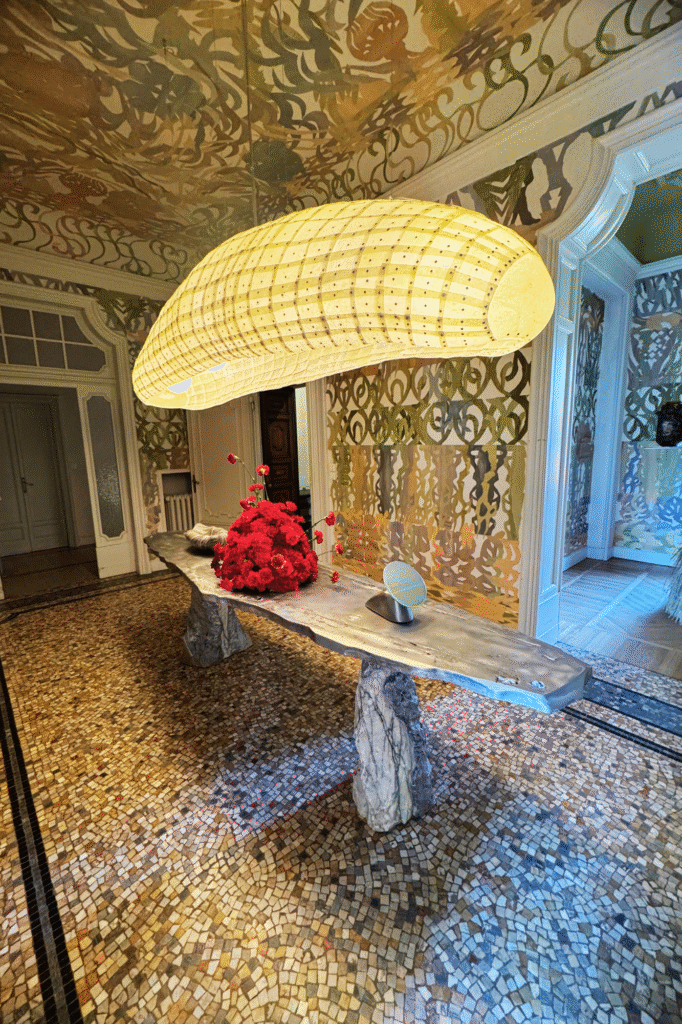
Pictured: Formsophy table; Hanging light sculpture by Mark Bimer; Graphic mural by Mikolaj Moskal and Kai Gliwa.
One hundred years of Polish design – presented during Milan Design Week.
In 1925, Poland presented itself for the first time at the International Exhibition of Decorative Arts and Design in Paris. The event was deeply symbolic – the country, reborn after years of partitions, could finally express its identity through the language of art and design. Arts and crafts and applied arts became a tool for building a modern image of Poland, and at the same time a form of cultural diplomacy – a subtle but effective force of influence.
Nearly a century later, during Milan Design Week, the curators of the exhibition “Romantic Brutalism. A journey into the depths of Polish craft and design” refer to that historic moment. The exhibition centers around motifs deeply rooted in Polish design culture – inspiration from folklore, admiration for the local landscape and organic forms present in nature. The artists, whose works we had the opportunity to see during the “Romantic Brutalism” exhibition in Milan, combine elements of Brutalism, Romanticism, folk art and Art Deco in their works, creating a new and intriguing narrative of identity and aesthetics.
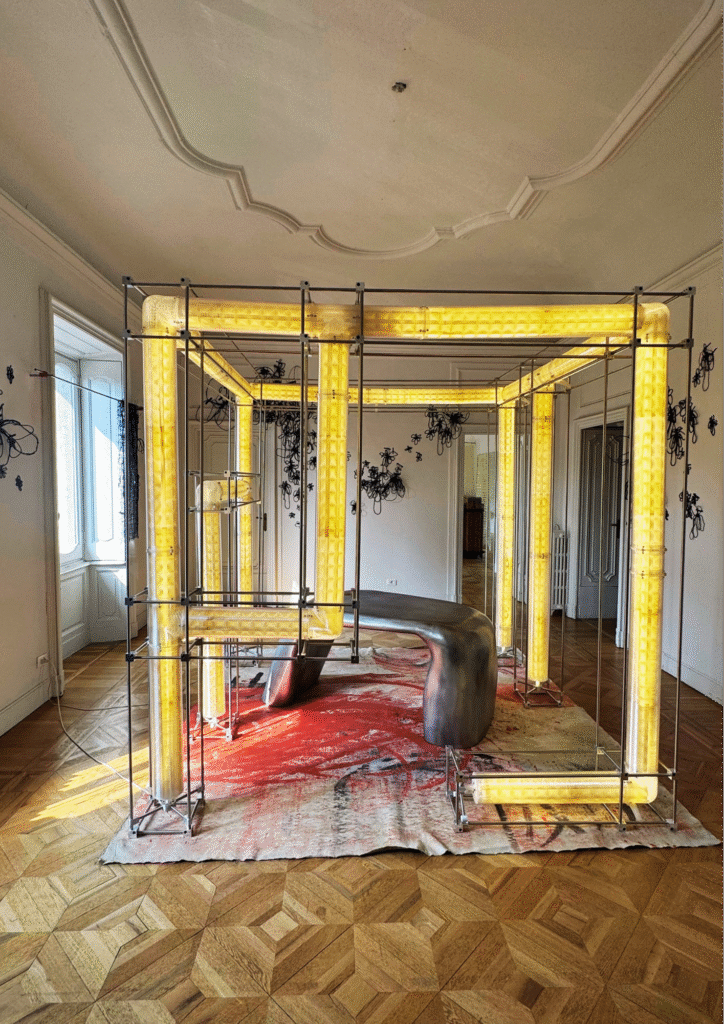
Pictured above: light installation by Dérive Studio; Aluminum desk by Jan Ankiersztajn.
Pictured below: Wall graphic by Kasia Kucharska
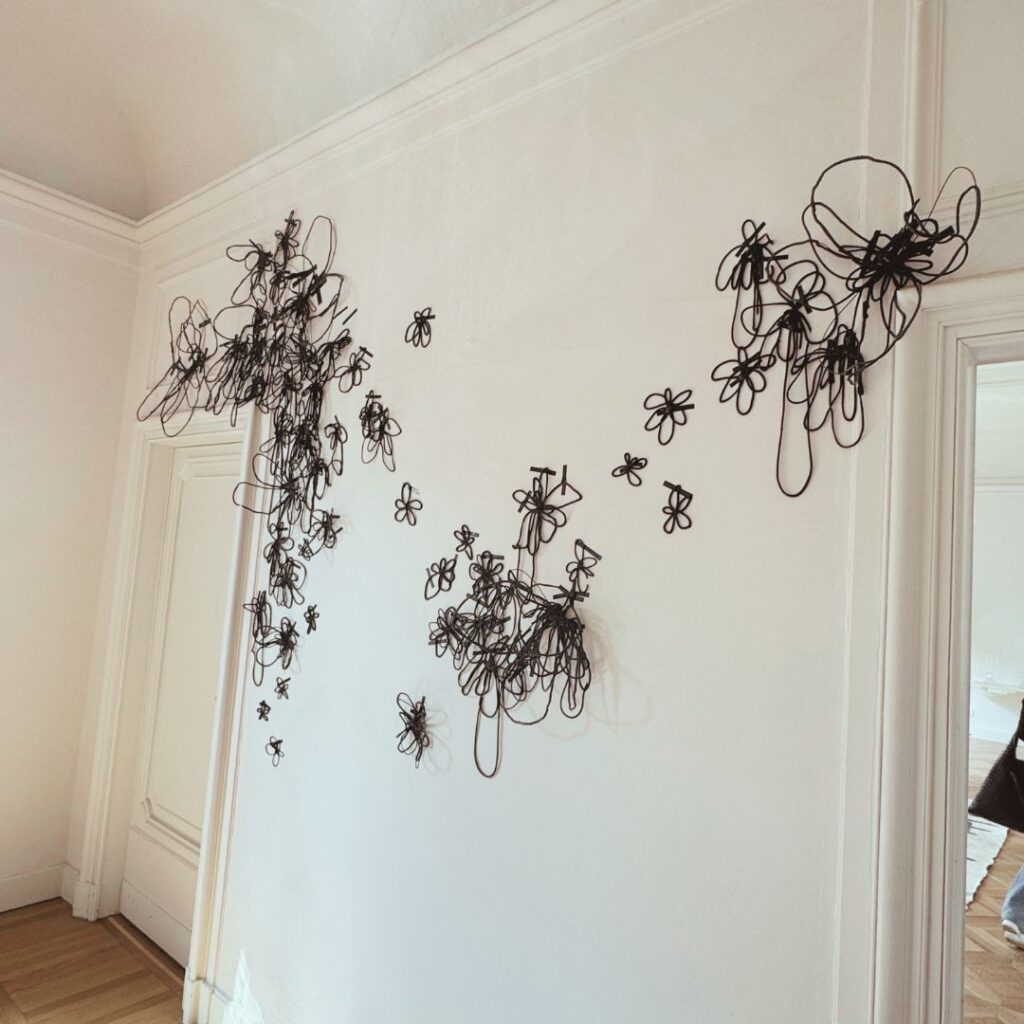
The art of woodworking is getting a new look thanks to the work of Alexander Onishh and Maciej Gąsienica Giewont. Onishh designs furniture that harmoniously combines contemporary aesthetics with traditional craftsmanship. His realizations testify to a deep knowledge of the structure of wood and its physical properties. On the other hand, Giewont, who runs an original studio in Warsaw, consciously exposes the natural “imperfections” of the material – such as knots or cracks – transforming them into unique aesthetic qualities. His approach alludes to the Japanese philosophy of wabi-sabi, celebrating the beauty in what is non-ideal and transient.
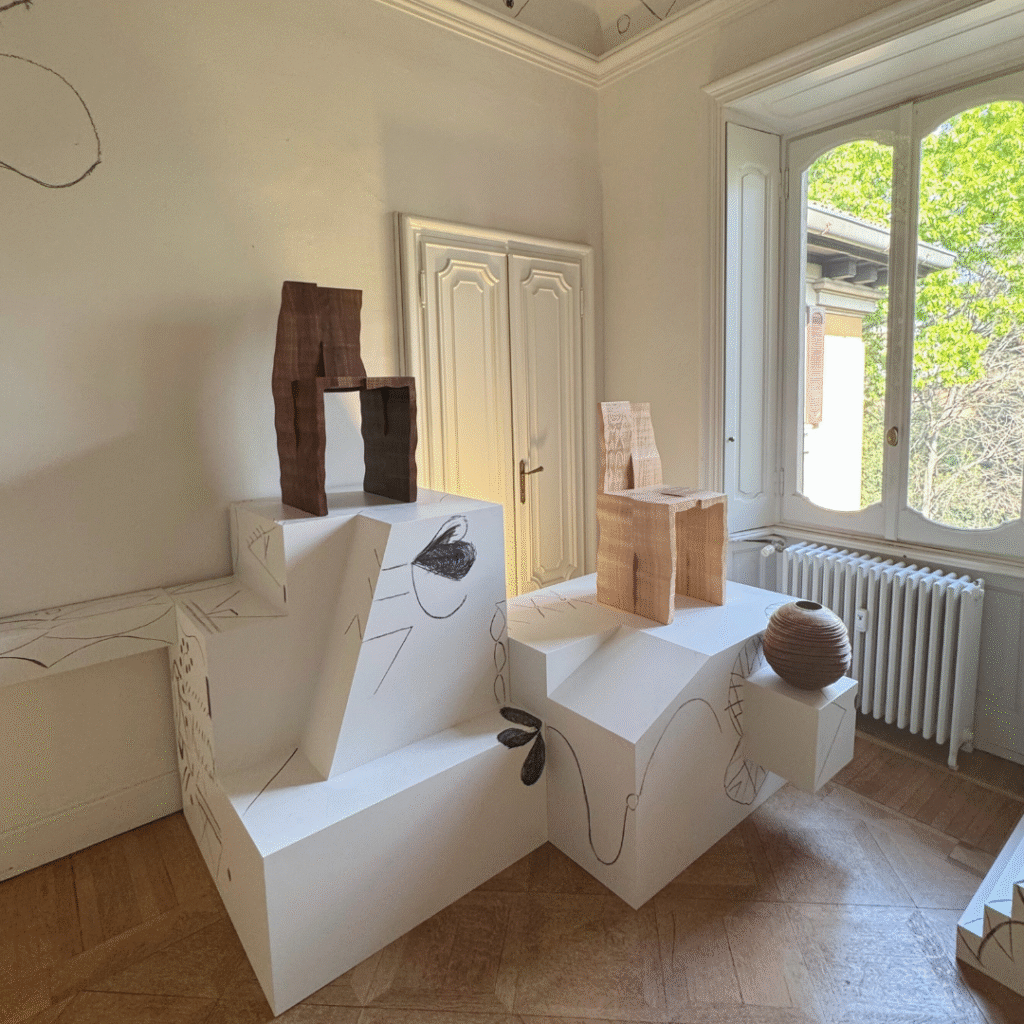
Pictured above: Wooden chairs designed by Alexander Onishh; Wooden vase by Maciej Gąsienica Giewont
My attention was also drawn to a very interesting work by Anna Bera – a mirror made of wood with an enigmatic, organic shape.

Pictured above: a mirror by Anna Bera

Pictured above: wall candle holder by design duo Hasik Design Studio
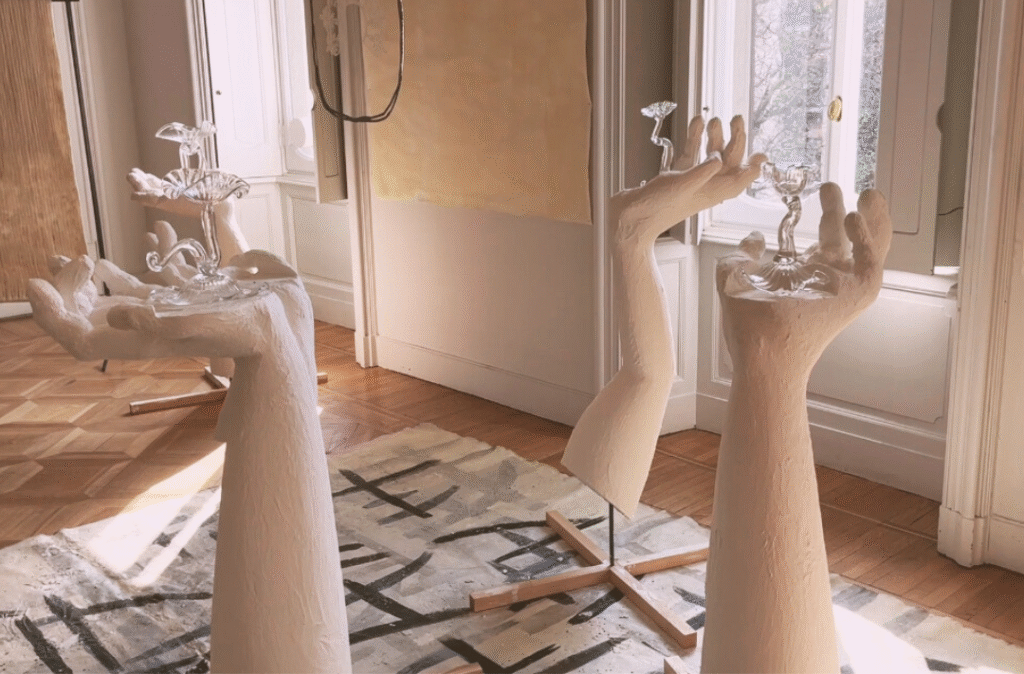
Pictured above: glass sculptures by Filomena Smoly
Filomena Smola is one of the few Polish women who blow and work with hot glass independently. For the artist, it is important to go through the entire creation process – from start to finish. She blows glass on her own, keeping it constantly at a temperature of about 1200°C, which requires precision, perseverance and full concentration. Every movement matters – glass is extremely sensitive, and the balance between heat and cold determines the success or breakage of a mold. It is an art of constant anticipation and attentiveness.

Pictured above: Flora Cabinet 190 Clear Amber by Marcin Rusak
Among the standout projects worth mentioning is the work of Marcin Rusak, who combines traditional craftsmanship with an experimental approach. The artist is known for his unique technique of embedding floral waste in resin, creating sculptures and furniture at the intersection of design and art, such as Flora Cabinet 190 Clear Amber, which enriches the “Romantic Brutalism” exhibition.
The “Romantic Brutalism” exhibition will travel to Warsaw after its presentation during Milan Design Week.
Following its premiere in Milan, the exhibition “Romantic Brutalism. A journey into the depths of Polish craftsmanship and design” will make its way to Warsaw, where it will be open to the general public at the Gawronski Villa. – This is one of the few pre-war palazzo-style villas that have survived in the capital. I am extremely happy that I was able to acquire it,” says Katarzyna Jordan – founder and president of the Visteria Foundation. – It will soon become the headquarters of the Visteria Foundation and our collection, she adds, announcing a rich program of events planned for 2025.
The exhibition will be open to the public from April 26 to May 15, 2025 at the Gawronski Villa in Warsaw, 23 Ujazdowskie Avenue.
Alexandra Lamot






